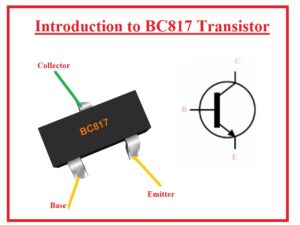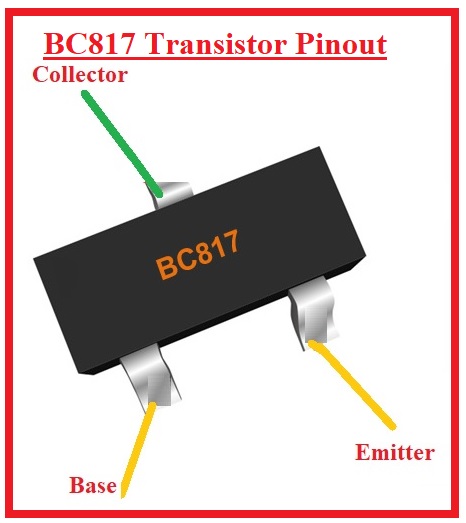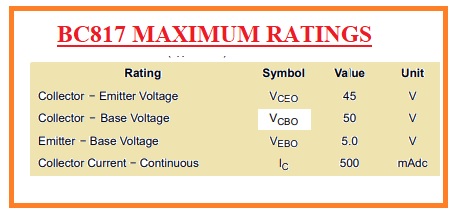 Hello, guys welcome to new tutorial. We will learn Introduction to BC817 Transistor. The transistor is playing a very significant role in the switching and amplifier circuits. Transistor configured as has two structures PNP and NPN. Its conduction is done by the electrons and holes. These carriers cross the PN junction to perform the conduction.
Hello, guys welcome to new tutorial. We will learn Introduction to BC817 Transistor. The transistor is playing a very significant role in the switching and amplifier circuits. Transistor configured as has two structures PNP and NPN. Its conduction is done by the electrons and holes. These carriers cross the PN junction to perform the conduction.
In this post, we will discuss the BC817 transistor pinout features and other related paramerts so let’s get started.
Introduction to BC817 Transistor
- BC817 is a semiconductor component that is used in amplifiers and switching circuits. It is NPN configured.
- There is need of less quantity of positive volts at the base connecting series resistance in a result when a specific current passes in the transistor base it gets on.
- Before application of transistor as amplifier must read the datasheet and not the gain value that will help to use it as an amplifier
- The highest IC of this module is about five hundred milliamperes having an extreme value of VEB is forty-five volts.
- The value of VCE is about forty-five volts and VCB is five volts with an operating temperature is one fifty centigrade.
- In case is a biased state current of five hundred milliamperes and power about the 0.46 watts about the VCE this state is called saturation.
- When there is no base current transistor is off and work as cut off region and volts about the VBE is five hundred millivolts

BC817 Transistor Pinout
- It has three pinout are described here
- Emitter: CUrernt goes from this part to PN junction
- Base: It wor as a controller or tap
- collector: current coming from emitter reach here and larger part of the component
BC817 maximum rating
- Maximum ratings of this transistor has been explained here
BC817 Transistor Features
- Its main applications are discussed here
- Its gain is six hundred
- Operating temperatures is minus sixty-five to one seventy-five centigrade
- The transition frequency is one hundred megahertz
- Its packaging is SC70
- Ib is fifty milliamperes
- VBE is five volts
- IC is five hundred milliamps
- It is NPN configured
BC817 Transistor Applications
- The main applications of this transistor are explained here
- It used as frequency control circuits
- Used in switching circuits
- Used as amplifiers
- Used in flasher
- Used in LED dimmers
That is al about the BC817 all details has been explained if you have any question ask in comments. Thanks for reading have a nice day see you in next post.







